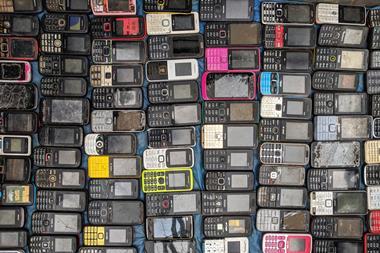Small consumer items often not recognised as electronics, such as hairdryers, speakers and vapes – classified as ‘invisible’ electronic waste – amount to 9 billion kilograms of e-waste every year.
That’s according to the Waste Electrical and Electronic Equipment (WEEE) Forum, a multinational association of WEEE producers, which commissioned the United Nations Institute for Training and Research (Unitar) to calculate how much ‘invisible’ e-waste is generated every year. The lack of transparency surrounding what counts as e-waste contributes to the problem as these goods hide in plain sight. They often end up in landfills or incinerators where toxic substances can leach into soil and water sources, polluting the environment and posing health risks to humans. The recycling capacity of ‘invisible’ electronics is often overlooked as consumers are oblivious to the value of recoverable raw materials in these devices which exceeds $9 billion (£7.4 billion) a year.
Vapes have gained popularity in recent years but many consumers are unaware of the metals in these devices. A total of 844 million vaping devices are discarded each year, Unitar discovered. These contain valuable copper wire and lithium-ion batteries – enough lithium is discarded in vapes to manufacture batteries for 5000 electric cars. When incorrectly disposed of, such as in household waste, lithium poses a serious fire risk. Waste company Veolia, responsible for nearly a tenth of the UK’s waste, says lithium-ion batteries cause around one fire a day at its facilities.
Currently, only 17% of vapers recycle their devices in the correct recycling bins in the UK and this number is mirrored in the reported average collection of e-waste globally. By UK law, every shop that sells vapes should take them back, but the cost of doing this would amount to £200 million a year so many retailers do not.
Councils in England called for a ban on disposable vapes earlier this year, following concerns about their environmental impact. The EU has also acknowledged the challenges associated with e-waste and is working on legislation to promote a circular economy for electronic goods. The WEEE Forum hopes global agreement can soon be reached on e-waste that matches recent efforts to combat plastic pollution.

















No comments yet